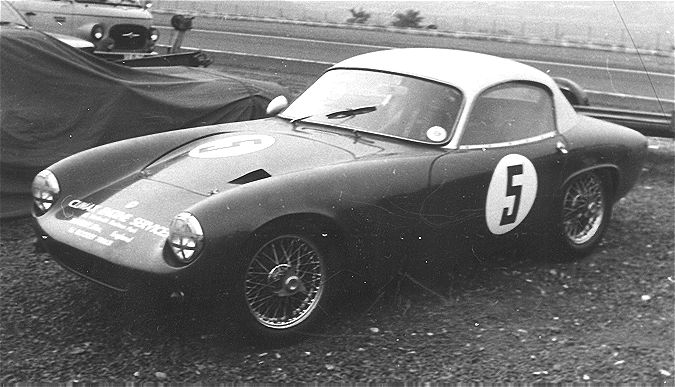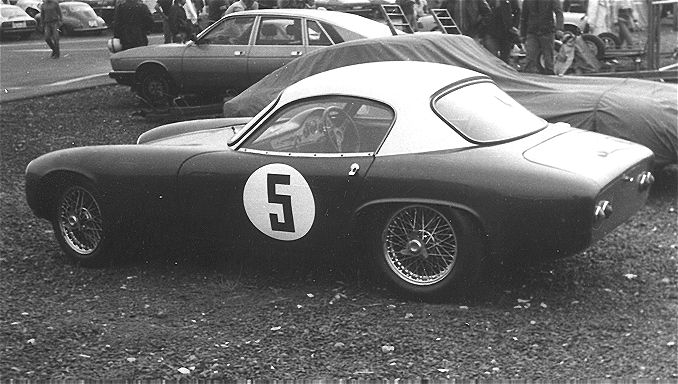Description
The Lotus Elite was one of the most advanced and beautiful sports cars of its era—a landmark in automotive engineering that redefined what a lightweight road car could be. Introduced in 1957, it was the first Lotus designed as a fully enclosed road-going grand tourer rather than a stripped-down racer, yet it still embodied Colin Chapman’s obsession with efficiency, innovation, and the intelligent use of materials. The Elite was a true engineering revolution: elegant, aerodynamic, and astonishingly light, it combined form and function in a way that few cars before—or since—have matched.
Known internally as the Type 14, the Lotus Elite was unveiled at the 1957 Earls Court Motor Show and immediately captivated the motoring world. It was unlike anything else on the road. While most sports cars of the 1950s used steel chassis and separate bodywork, Chapman took a radical approach. The Elite featured a monocoque body made entirely from fiberglass—a world first for a production car. The entire structure, including the load-bearing bulkheads, was molded as a single piece of reinforced plastic, giving the car exceptional rigidity and a curb weight of just 500 kilograms. This groundbreaking construction method not only saved weight but also contributed to the car’s remarkable handling and aerodynamic efficiency.
The Elite’s shape was a masterpiece of both beauty and function. Its teardrop body, designed with input from aerodynamicist Frank Costin, featured smooth, flowing lines, a sharply sloped roofline, and an elegantly tapered tail. The car’s frontal area was minimal, and every contour was sculpted to reduce drag. With a drag coefficient of just 0.29, it was one of the most aerodynamically efficient cars of its time—a figure impressive even by modern standards. The result was a car that looked like a jewel but performed like a racing machine.
Power came from a Coventry Climax FWE engine, a compact 1,216 cc inline-four that had evolved from the company’s proven racing units. Constructed from aluminum alloy, it was both lightweight and robust. In the Elite, it produced around 75 horsepower in standard tune, though later and competition versions could deliver over 100 horsepower. This might sound modest, but given the car’s extraordinarily low weight, performance was outstanding: 0 to 60 mph in around 11 seconds and a top speed approaching 120 mph. The engine’s smooth, eager revving nature perfectly complemented the Elite’s agile chassis and refined demeanor.
The gearbox was a four-speed manual, initially a modified unit from the MGA, later replaced by a ZF unit for improved durability. Power was sent to the rear wheels, and the suspension system reflected Chapman’s racing expertise. The front used independent double wishbones with coil springs and telescopic dampers, while the rear employed Chapman’s signature strut suspension with lower wishbones—a design derived from Lotus’s Formula cars. The result was superb balance and roadholding, with handling that was both sharp and forgiving. Combined with its near-perfect weight distribution, the Elite offered precision and agility unmatched by larger, heavier sports cars of the era.
The interior of the Elite reflected Chapman’s belief that lightness and simplicity did not have to come at the expense of elegance. The cockpit was snug but beautifully finished, with leather-trimmed seats, a wood-rimmed steering wheel, and a minimalist dashboard carrying essential Smiths instruments. The low seating position and expansive view through the curved glass gave the driver a sensation of speed even at moderate pace. Despite its racing pedigree, the Elite was a surprisingly refined touring car, capable of long-distance comfort thanks to its smooth drivetrain and excellent aerodynamics.
On the road, the Elite was a revelation. Its steering was light and perfectly weighted, providing immediate feedback and precision. The car cornered with poise and stability, its lightness allowing it to change direction effortlessly. It could be driven fast with confidence, the suspension soaking up imperfections while keeping the tires firmly in contact with the road. At speed, the Elite felt planted and composed, with minimal wind noise and a sense of harmony between chassis and powertrain.
The Elite was also highly successful in motorsport. Though conceived as a road car, it quickly found success on the track, particularly in endurance racing. It made its debut at Le Mans in 1959, where it won its class and finished 8th overall—an extraordinary achievement for such a small car. The Elite would go on to win its class at Le Mans six times between 1959 and 1964, proving the effectiveness of Chapman’s design in the most demanding conditions. Its combination of speed, reliability, and fuel efficiency made it a favorite among privateer teams and established Lotus as a major force in international sports car racing.
However, the Elite’s advanced design also made it expensive and difficult to build. The fiberglass monocoque, while innovative, was complex and time-consuming to produce, and early examples suffered from structural cracking and fit issues. Chapman’s relentless pursuit of lightness left little margin for robustness, and the cost of production was higher than expected. Despite its acclaim, only around 1,030 Elites were built between 1957 and 1963, after which it was replaced by the more conventional (and profitable) Lotus Elan.
Today, the Lotus Elite is recognized as one of the most important sports cars ever made. Its influence on automotive engineering was profound: it proved that composite materials could be used structurally and inspired generations of lightweight, aerodynamically efficient cars. Collectors prize surviving examples for their beauty, rarity, and historical significance, as well as for the purity of their driving experience.
The Lotus Elite was a car ahead of its time—a blend of elegance, innovation, and performance that defined what a true Lotus should be. It was a grand experiment that succeeded brilliantly in concept, even if it was challenging in execution. More than six decades later, it remains a marvel of design and engineering: light, graceful, and alive with the spirit of Colin Chapman’s genius.

